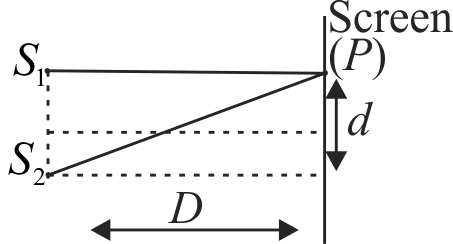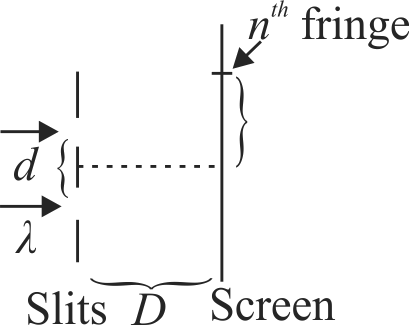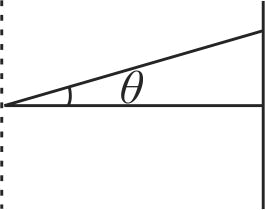368060
Assertion :
Given, In Young's double slit experiment the two slits are at distance \(d\) apart. Interference pattern is observed on a screen at distance \(D\) from the slits. At a point on the screen when it is directly opposite to one of the slits, first dark fringe is observed.
Reason :
The wavelength of wave is proportional to square of distance of two slits.
368061 In a Young’s double slit experiment, a student observes 8 fringes in a certain segment of screen when a monochromatic light of \(600\;nm\) wavelength is used. If the wavelength of light is changed to \(400\;nm\) , then the number of fringes he would observe in the same region of the screen is
368060
Assertion :
Given, In Young's double slit experiment the two slits are at distance \(d\) apart. Interference pattern is observed on a screen at distance \(D\) from the slits. At a point on the screen when it is directly opposite to one of the slits, first dark fringe is observed.
Reason :
The wavelength of wave is proportional to square of distance of two slits.
368061 In a Young’s double slit experiment, a student observes 8 fringes in a certain segment of screen when a monochromatic light of \(600\;nm\) wavelength is used. If the wavelength of light is changed to \(400\;nm\) , then the number of fringes he would observe in the same region of the screen is
368060
Assertion :
Given, In Young's double slit experiment the two slits are at distance \(d\) apart. Interference pattern is observed on a screen at distance \(D\) from the slits. At a point on the screen when it is directly opposite to one of the slits, first dark fringe is observed.
Reason :
The wavelength of wave is proportional to square of distance of two slits.
368061 In a Young’s double slit experiment, a student observes 8 fringes in a certain segment of screen when a monochromatic light of \(600\;nm\) wavelength is used. If the wavelength of light is changed to \(400\;nm\) , then the number of fringes he would observe in the same region of the screen is
368060
Assertion :
Given, In Young's double slit experiment the two slits are at distance \(d\) apart. Interference pattern is observed on a screen at distance \(D\) from the slits. At a point on the screen when it is directly opposite to one of the slits, first dark fringe is observed.
Reason :
The wavelength of wave is proportional to square of distance of two slits.
368061 In a Young’s double slit experiment, a student observes 8 fringes in a certain segment of screen when a monochromatic light of \(600\;nm\) wavelength is used. If the wavelength of light is changed to \(400\;nm\) , then the number of fringes he would observe in the same region of the screen is
368060
Assertion :
Given, In Young's double slit experiment the two slits are at distance \(d\) apart. Interference pattern is observed on a screen at distance \(D\) from the slits. At a point on the screen when it is directly opposite to one of the slits, first dark fringe is observed.
Reason :
The wavelength of wave is proportional to square of distance of two slits.
368061 In a Young’s double slit experiment, a student observes 8 fringes in a certain segment of screen when a monochromatic light of \(600\;nm\) wavelength is used. If the wavelength of light is changed to \(400\;nm\) , then the number of fringes he would observe in the same region of the screen is


